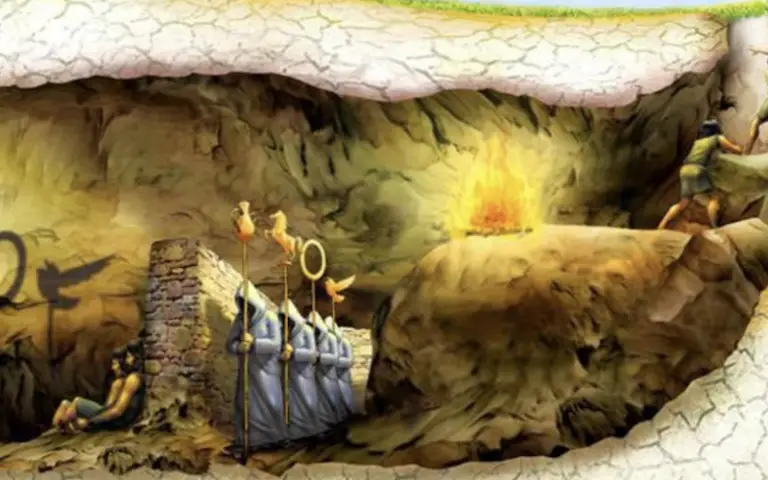

They are not aware of any delicacies beyond their realm of reality, and their simple pleasures are enough for them. There has been no need to think of life outside the cave.Įverything they need physiologically is provided to them. It works for them, and has kept them alive and entertained their entire lives.

These prisoners have become comfortable with the worldview. Their minds have never experienced anything outside of these forms.The prisoners have structured their entire understanding of the world around these forms.

#ALLEGORY OF THE CAVE ANALYSIS FULL#
Once his eyes adjust, he sees a bright and vibrant landscape full of life and color. He is greeted by a blinding light (sun) as he ventures outside of the cave. One of the prisoners escapes his chains and climbs the stairs out of the cave. What would happen if a prisoner were to escape, and see reality beyond the shadows? It is also evident that the prisoners do not even have enough curiosity to discover what is truly happening. To the prisoners, a world beyond the shadows does not exist. These prisoners perceive the shadows for the purest form of reality, and do not know what is actually creating the shadows. However, since the prisoners cannot turn their heads, they are unaware of what is actually happening behind them. The puppeteers also make noises the go along with the puppets. The puppeteers hold up images of animals and real objects that cast shadows upon the wall that the prisoners are viewing. Directly behind the prisoners, is an infinitely-burning fire, and between the fire and the prisoners, is a pathway where “Puppeteers” walk. These prisoners can only view the wall in front of them. Plato’s Allegory of the Cave begins with an image of prisoners chained in a cave who are unable to turn their heads. Introduction to Plato’s Allegory of the Cave
#ALLEGORY OF THE CAVE ANALYSIS FREE#
This allegory can be interpreted as a representation of the the dichotomy between free thinkers and those who subscribe to collective world-views. Plato’s Allegory of the Cave was written by Plato, in his work Republic, around 375 BC.


 0 kommentar(er)
0 kommentar(er)
